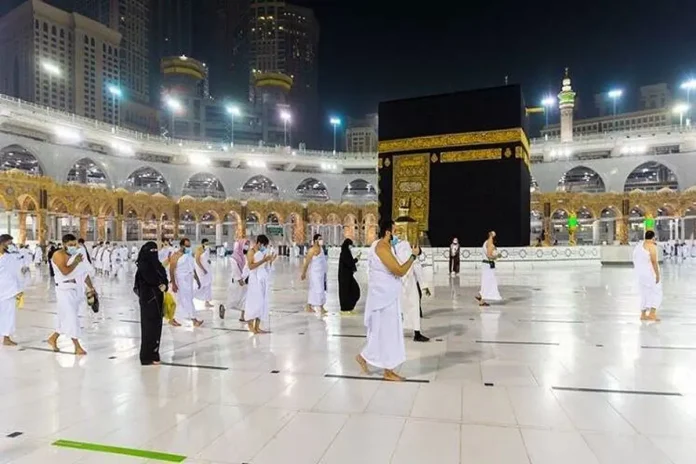Tawaf and Sai, both are necessary rituals of the Hajj and Umrah pilgrimage. All of the pilgrims arriving in Makkah through their Umrah packages Bradfordnecessarily need to undertake these rituals to make their pilgrimage valid.
Here’s what you need to know about Tawaf and Sai; their historical and Qur’anic significance.
Tawaf:
Tawaf refers to the act of circling the Holy Kaabah (present in Masjid-al-Haram in Makkah) for seven rounds in a counter clockwise direction. It is a kind of Ibadah that showcases a Muslim’s strong devotion to Allah Almighty as all of the pilgrims are offering Tawaf rituals dressed in plain white clothes. They stand equal in front of Allah Almighty regardless of any discrimination of caste, colour, social status, and ethnicity.
This act of circumambulation of the Holy Kaabah for seven consecutive rounds is in the sunnah of Prophet Ibrahim (AS) and his son Isma’il (AS) who built the Holy Kaabah as per Allah’s guidance thousands of years ago. Allah Almighty has also mentioned it in the Holy Quran in Surat Al-Baqarah (2:125).
Tawaf is more than merely walking and making supplication, it’s a spiritual act that represents the complete devotion of the pilgrims to Allah Almighty as well as portrays an example of unity among Muslims from all over the world that can hardly be seen elsewhere.
How to perform Tawaf for Umrah and Hajj?
- Assume the state of Ihram from the Meeqat region.
- Enter Masjid-al-Haram, make Wudhu (if necessary), and begin the Tawaf rituals.
- Start your first round of Tawaf from the place of Hajar-al-Aswad (the Black Stone) and proceed in an anti-clockwise direction i.e. keeping the holy Kaabah on your left-hand side.
- Once you complete the round and return to the place of Hajjar-al-Aswad, your first round of Tawaf gets complete.
- Proceed in the same manner till all of the rounds of Tawaf are complete.
- Recite specific Duas for each round.
- Upon completion of your Tawaf rituals, proceed towards Maqam-e-Ibrahim (the station of Ibrahim AS) and offer two Rakat Salat-al-Tawaf near it.
- Drink Zamzam water.
Note that, considering the health and physical constraints of different people, it is permissible to take short breaks between Tawaf rituals (if necessary).
Sai:
Sai is the act of running/walking across the hills of Safa and Marwah, present within the premises of Masjid-al-Haram for seven rounds. This ritual is performed honoring the struggles of Hajar (wife of Prophet Ibrahim AS) when she was searching for water for her infant son Hazrat Ismail (AS) in the barren desert of Makkah. She ran across the hills of Safa and Marwah in search of water from any nearby karavan but failed. Miraculously, as per the will of Allah Almighty, water sprang from the place where Ismail (AS) was rubbing his feet in thirst. That water is known as Zamzam. So, pilgrims of Hajj and Umrah offer Sayee rituals to remember this great event in Islamic history.
Allah Almighty has also mentioned about Sayee in the Holy Quran in Surat Al-Baqarah (2:158).
How to perform Sayee?
- Begin your Sayee rituals by making Wudhu first (if necessary).
- Start from Safah Hill and proceed towards Marwah.
- Upon reaching Marwah Hill, recite supplications facing the Holy Kaabah.
- From Safah to Marwah will constitute your first round.
- Now return from Marwah towards Safah for your second round.
- Proceed in the same manner until the seven rounds are complete (the seventh round of Sayee must end at Marwah Hill).
Similar to the ruling in Tawaf, one can also take short breaks between the rounds of Sayee if his/her health or physical conditions necessitate it.
The rituals of Tawaf and Sa’i aren’t just actions but a portrayal of deep faith, strong trust, and unity. Pilgrims, walking along the same paths, honor these historical and religious moments to not only learn about the important lessons about reliance on Allah Almighty but also come together in diversity to learn about the importance of co-existing.
If you are traveling soon for the holy rituals with cheap halal holidays, you must know about the historical and Quranic significance of Tawaf and Sai to make your pilgrimage more meaningful and memorable.
